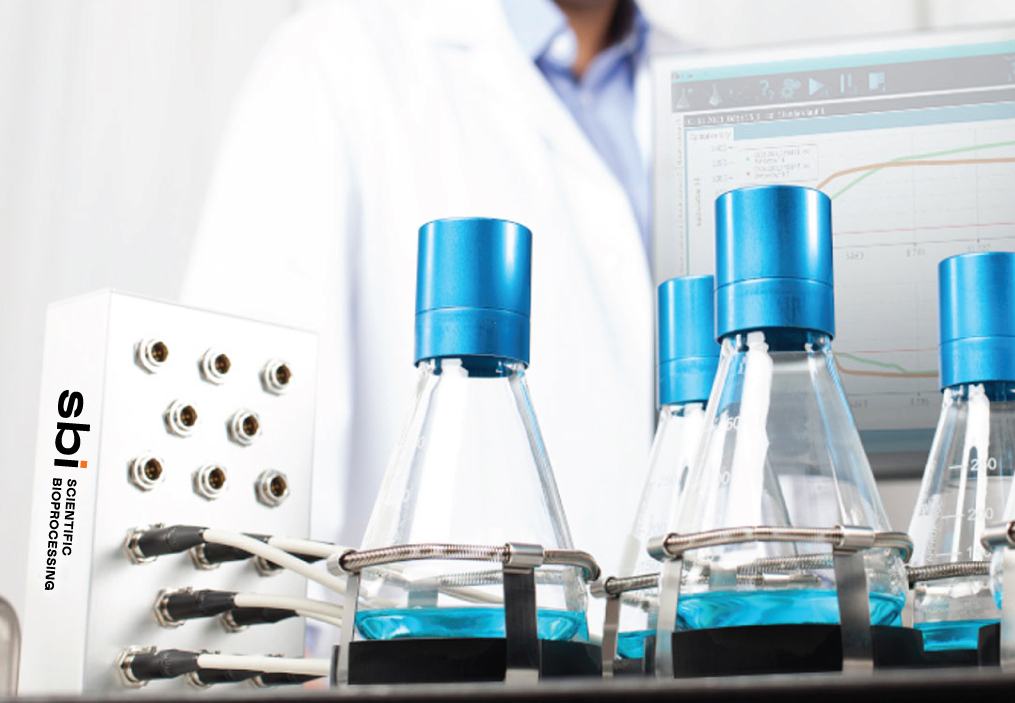Customer Success Story
Using The Cell Growth Quantifier (CGQ) For Growth Characterisation
Frédéric Lapierre, Prof. Robert Huber (Munich University of Applied Sciences)
Background
Data from open-access publication “Revealing nutritional requirements of MICP-relevant Sporosarcina pasteurii DSM33 for growth improvement in chemically defined and complex media” (https://www.nature.com/articles/s41598-020-79904-9)
The gram-positive bacterium Sporosarcina pasteurii is the most applied microorganism in Microbial Induced Calcite Precipitation (MICP) research. Due to its high ureolytic activity, it allows for an overall increase of the environmental pH value as well as carbonate production and thus in ideal conditions for calcite precipitation in the presence of calcium ions. This effect is considered for several technical applications, such as soil reinforcement and restoration of construction materials like limestone or concrete. Up to the time of publication, no S. pasteurii batch cultivation protocol leading to notably higher cell densities than an OD600 of 5 has been published. Such a cultivation protocol was urgently needed, as improving S. pasteurii cultivation performance is a prerequisite to make MICP economically more feasible for industrial applications.
In the published manuscript, a chemically defined medium for S. pasteurii was developed and improved. After determining the nutritional requirements and auxotrophies of S. pasteurii DSM 33, a simple complex medium was supplemented based on these findings. These growth media were evaluated by monitoring the backscatter and oxygen transfer rate (OTR) during shake flask cultivation. For this purpose, an OTR measurement system positioned at the top of the cultivation chamber was combined with the backscatter measurement system (CGQ, aquila biolabs, Baesweiler) below individual shake flasks to match OTR data to bacterial growth. Two results are shown in Figure 1.
.png) Fig. 1 OTR and backscatter of shake flask cultivations of S. pasteurii in different media. Shake flask cultivation was carried out in 250 mL shake flasks with a filling volume of 10 mL at 30 °C at a shaking frequency of 300 rpm and a shaking diameter of 50 mm.
Fig. 1 OTR and backscatter of shake flask cultivations of S. pasteurii in different media. Shake flask cultivation was carried out in 250 mL shake flasks with a filling volume of 10 mL at 30 °C at a shaking frequency of 300 rpm and a shaking diameter of 50 mm.The backscatter and OTR signals are illustrating the same biological phenomena (Fig. 1). For the unmodified chemically defined medium, the OTR and backscatter signals are both typical for a non-carbon source substrate limitation (Fig. 1a). For the supplemented complex medium, the OTR signal plateaus between 11 and 14 h, indicating an oxygen limitation of the culture. During this time, the backscatter signal is almost linear, which is typical of oxygen-limited growth (Fig. 1b). For both cultures, a drop of the OTR indicates the exhaustion of a substrate, resulting in growth deceleration or even decline, which is illustrated by the backscatter signal. Overall, OTR and backscatter signal match for both cultivation scenarios.

Testimonial
“The backscatter data we gathered here with the CGQ system clearly shows a match with another growth characterization parameter, in this case with the oxygen transfer rate. This means that the CGQ system is a very useful tool that allows for easy growth characterisation without any manual work and it can even be seamlessly combined with online OTR measurements.”
Frédéric Lapierre (HS München)